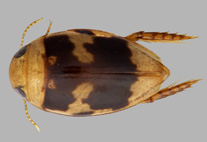Abstract
The gray toad agama, Phrynocephalus scutellatus (Olivier, 1807) species complex is confined to the Iranian plateau, and forms one of the most widespread, but rarely studied species of the family Agamidae. It represents a complex with many local populations inhabiting a variety of habitats, and exhibiting considerable morphological, genetic and ecological variations. We analyzed sequences of the mitochondrial ND2 gene and tRNA-Trp and tRNA-Ala derived from 89 geographically distant populations. The sequences data strongly support a basal separation of the populations of southeastern—south-central Iran from those occurring in the North. The subsequent radiation, fragmentation, and evolution of these major assemblages have led to four discernible geographical lineages in Iran: southeastern—south-central, west-central, east—northeastern and Khaf. The southeastern—south-central radiation is the earliest lineage and Khaf lineage is probably related to the Afghan plateau. Separation of northern clades from each other can be explained by the presence of large deserts in central Iran. Due to the lack of sufficient geological information, the divergence between the northern and southern clades cannot be explained by the present data.

